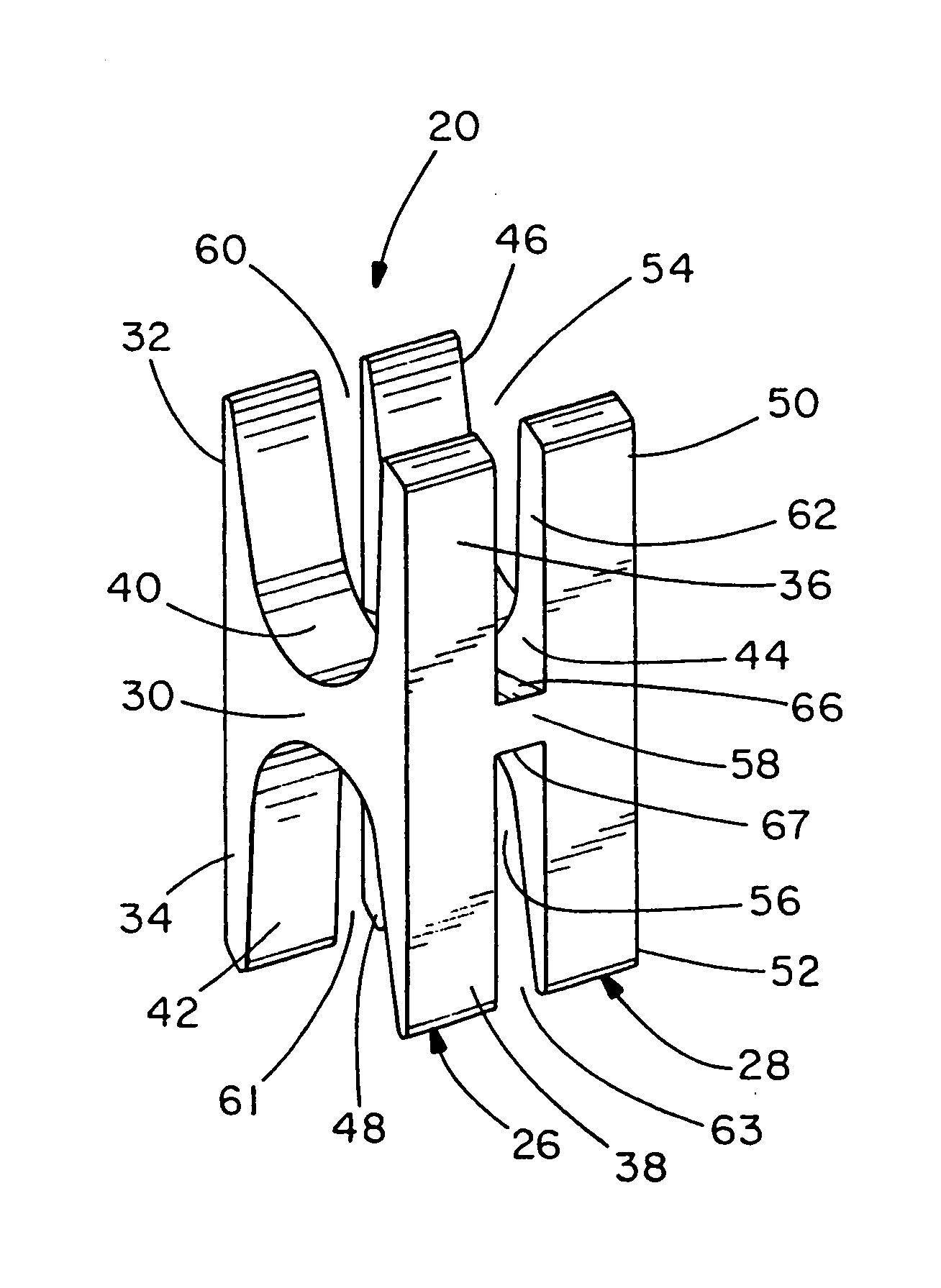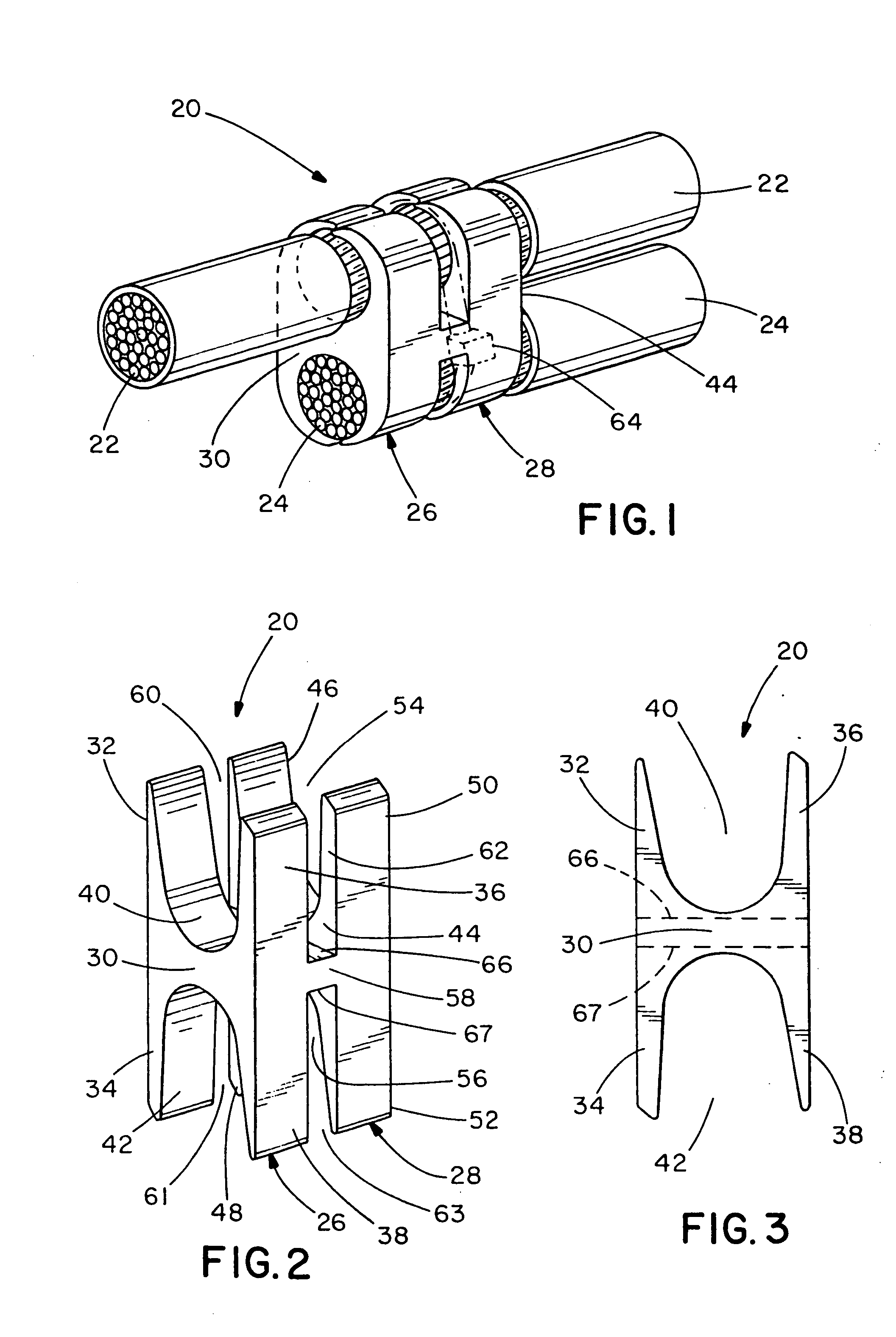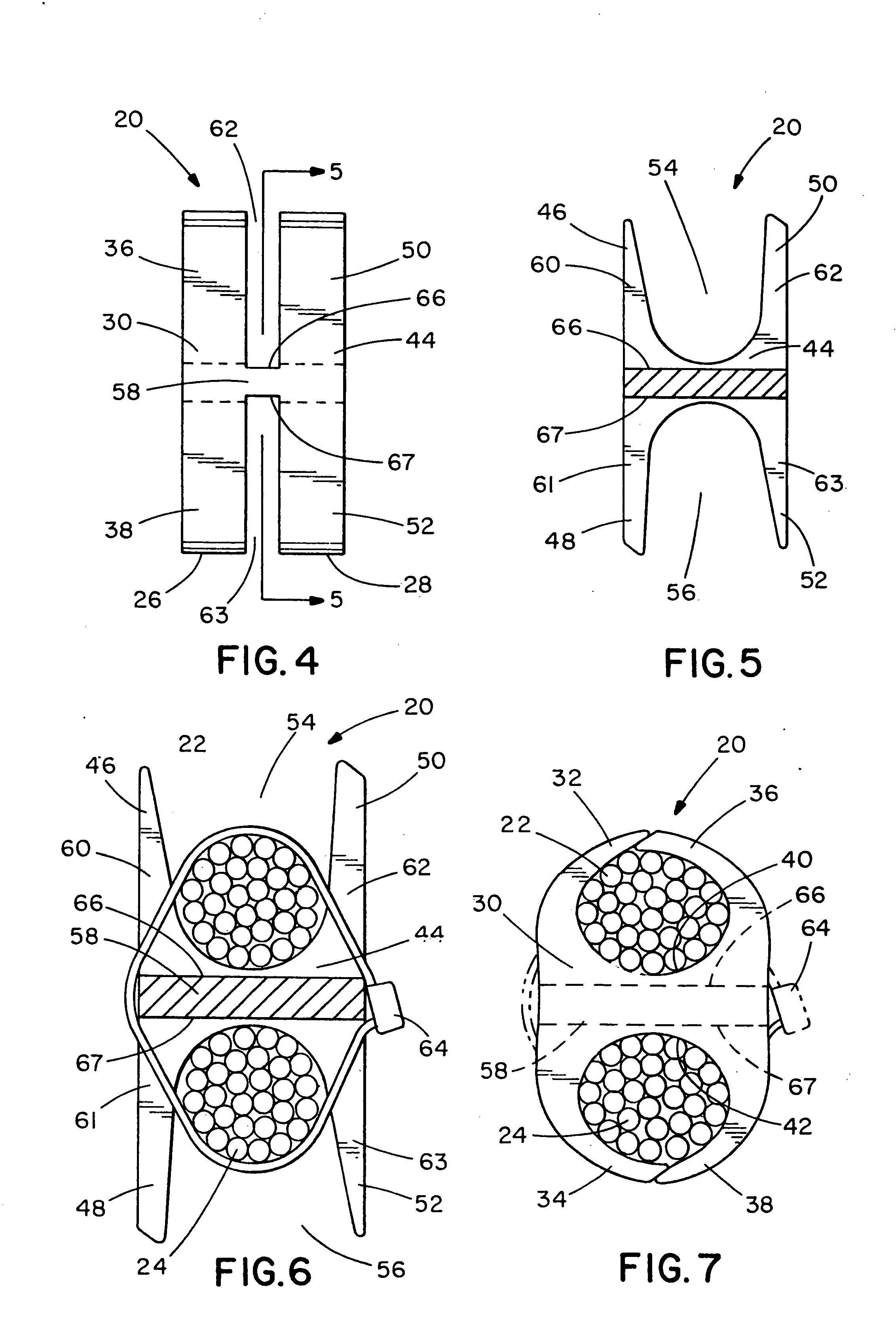H-tap compression connector
- Summary
- Abstract
- Description
- Claims
- Application Information
AI Technical Summary
Benefits of technology
Problems solved by technology
Method used
Image
Examples
first embodiment
[0034] the present invention is illustrated in FIGS. 1-7. FIG. 1 shows an H-tap compression connector 20 secured around wires, such as run wires 22 and tap wires 24, after crimping. Preferably, compression connector 20 is a one-piece member made of electrically conductive material, such as copper. However, it is likewise contemplated that compression connector 20 may be made of any suitable materials or elements.
[0035] As shown in FIGS. 2-5, compression connector 20 has a first section 26 and a second section 28. First section 26 includes a first body portion 30 having four leg portions 32, 34, 36, 38 extending therefrom to form conductor receiving channels 40, 42 in which run wires 22 and tap wires 24 can be placed. Second section 28 is identical to first section 26. Thus, second section 28 includes a second body portion 44 having four leg portions 46, 48, 50, 52 extending therefrom to form conductor receiving channels 54, 56 in which run wires 22 and tap wires 24 can be placed. As...
second embodiment
[0038] the present invention is illustrated in FIGS. 8-10. As shown in FIG. 8, an H-tap compression connector 120 is substantially the same as compression connector 20 illustrated in FIGS. 1-7, except compression connector 120 has curved leg portions and is designed to accommodate smaller wires than compression connector 20. However, compression connector 120 functions similarly to compression connector 20.
third embodiment
[0039] the present invention is illustrated in FIGS. 11-13. As shown in FIG. 11, an H-tap compression connector 220 is substantially the same as compression connector 20 illustrated in FIGS. 1-7, except compression connector 220 has curved leg portions and is designed to accommodate smaller wires than compression connector 20. However, compression connector 220 functions similarly to compression connector 20 illustrated in FIGS. 1-7.
PUM
 Login to View More
Login to View More Abstract
Description
Claims
Application Information
 Login to View More
Login to View More - R&D
- Intellectual Property
- Life Sciences
- Materials
- Tech Scout
- Unparalleled Data Quality
- Higher Quality Content
- 60% Fewer Hallucinations
Browse by: Latest US Patents, China's latest patents, Technical Efficacy Thesaurus, Application Domain, Technology Topic, Popular Technical Reports.
© 2025 PatSnap. All rights reserved.Legal|Privacy policy|Modern Slavery Act Transparency Statement|Sitemap|About US| Contact US: help@patsnap.com



